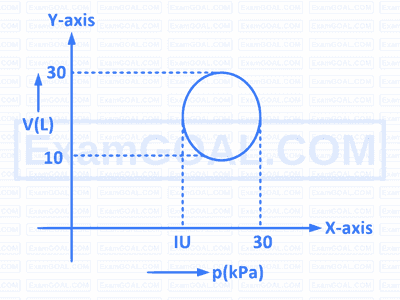Chemistry
The number of $d$ electrons in Fe is equal to which of the following?
(i) Total number of ' $s$ ' electrons of Mg .
(ii) Total number of ' $p$ ' electrons of Cl .
(iii) Total number of ' $p$ ' electrons of Ne .
The correct option is
Which of the following orders are correct regarding their covalent character?
(i) $\mathrm{KF}<\mathrm{KI}$
(ii) $\mathrm{LiF}<\mathrm{KF}$
(iii) $\mathrm{SnCl}_2<\mathrm{SnCl}_4$
(iv) $\mathrm{NaCl}<\mathrm{CuCl}$
The correct option is
$$ \text { Observe the following sets. } $$
$$ \begin{array}{lll} \hline \text { Order } & \text { Property } \\ \hline \text { (i) } \mathrm{NH}_3>\mathrm{H}_2 \mathrm{O}>\mathrm{SO}_2 & \text { Bond angle } \\ \hline \text { (ii) } \mathrm{H}_2 \mathrm{O}>\mathrm{NH}_3>\mathrm{H}_2 \mathrm{~S} & \text { Dipole moment } \\ \text { (iii) } \mathrm{N}_2>\mathrm{O}_2>\mathrm{H}_2 & \text { Bond enthalpy } \\ \hline \text { (iv) } \mathrm{NO}^{+}>\mathrm{O}_2>\mathrm{O}_2^{2-} & \text { Bond order } \\ \hline \end{array} $$
The RMS velocity ( $u_{\mathrm{rms}}$ ) of one mole of an ideal gas was measured at different temperatures and the following graph is obtained. What is the slope $(m)$ of straight line ?
$$ \begin{aligned} & \left(X \text {-axis }=T(\mathrm{~K}): Y \text {-axis }=\left(u_{\mathrm{rms}}\right)^2: M=\right.\text { molar mass : } \\ & R=\text { gas constant } \end{aligned} $$

Two statements are given below.
Statement I : Viscosity of liquid decreases with increase in temperature.
Statement II : The units of viscosity coefficient are pascal.
The correct answer is
Observe the following reactions.
$$ \begin{array}{ll} A B(g)+25 \mathrm{H}_2 \mathrm{O}(l) \longrightarrow\left(25 \mathrm{H}_2 \mathrm{O}\right) A B ; & \Delta H=x \mathrm{~kJ} \mathrm{~mol}^{-1} \\ A B(g)+50 \mathrm{H}_2 \mathrm{O}(l) \longrightarrow\left(50 \mathrm{H}_2 \mathrm{O}\right) A B ; & \Delta H=y \mathrm{~kJ} \mathrm{~mol}^{-1} \end{array} $$
$A_2(g) \stackrel{T(\mathrm{~K})}{\rightleftharpoons} B_2(\mathrm{~g})$
is 39.0. In a closed one litre flask, one mole of $A_2(g)$ was heated to $T(\mathrm{~K})$. What are the concentrations of $A_2(g)$ and $B_2(g)$ (in mol L ${ }^{-1}$ ) respectively at equilibrium?
Improve silver ore $+\mathrm{CN}^{-}+\mathrm{H}_2 \mathrm{O} \xrightarrow{\mathrm{O}_2}[\mathrm{X}]^{-}+\mathrm{OH}^{-}$
$$ [X]^{-}+\mathrm{Zn} \longrightarrow[Y]^{2-}+\mathrm{Ag} \text { (pure) } $$
The co-ordination numbers of the metals in $[X]$. [ $Y$ ] are respectively
How many of the following ligands are stronger than
$$ \begin{aligned} & \mathrm{H}_2 \mathrm{O} \text { ? } \\ & \mathrm{S}^{2-}, \mathrm{Br}^{-}, \mathrm{C}_2 \mathrm{O}_4^{2-}, \mathrm{CN}^{-} \text {, en, } \mathrm{NH}_3, \mathrm{CO}, \mathrm{OH}^{-} \\ & \begin{array}{ll} \text { } & \text { } \end{array} \end{aligned} $$
$$ \text { The common monomer for both terylene and glyptal is } $$
$$ \text { Match the following. } $$
| List I (Drug) | List I (Use) | ||
|---|---|---|---|
| A | Veronal | i | Antihistamine |
| B | Morphine | ii | Hypnotic |
| C | Seldane | iii | Analgesic |
| iv | $$ \text { Antidepressant } $$ |
||

An isomer of $\mathrm{C}_5 \mathrm{H}_{12}$ on reaction with $\mathrm{Br}_2$ /light gave only one isomer $\mathrm{C}_5 \mathrm{H}_{11} \mathrm{Br}(X)$. Reaction of $X$ with $\mathrm{AgNO}_2$ gave $Y$ as major product. What is $Y$ ?
What are the major products $X$ and $Y$ respectively in the following reactions?
$$ \begin{aligned} & \left(\mathrm{CH}_3\right)_3 \mathrm{CONa}+\mathrm{CH}_3 \mathrm{CH}_2 \mathrm{Br} \longrightarrow X \\ & \left(\mathrm{CH}_3\right)_3 \mathrm{CBr}+\mathrm{CH}_3 \mathrm{CH}_2 \mathrm{ONa} \longrightarrow Y \end{aligned} $$
Match the following reagents with the products obtained when they reacted with a ketone.
| List I | List II | ||
|---|---|---|---|
| A. | $$ \mathrm{C}_6 \mathrm{H}_5 \mathrm{NHNH}_2 $$ |
i. | Schiff base |
| B. | $$ \mathrm{NH}_2 \mathrm{OH} $$ |
ii. | Hydrazone |
| C. | $$ \mathrm{C}_6 \mathrm{H}_5 \mathrm{NH}_2 $$ |
iii. | Oxime |
| iv. | Phenyl hydrazone | ||
$$ \text { Correct answer is } $$


Mathematics
If $\frac{1}{(3 x+1)(x-2)}=\frac{A}{3 x+1}+\frac{B}{x-2}$ and $\frac{x+1}{(3 x+1)(x-2)}=\frac{C}{3 x+1}+\frac{D}{x-2}$, then
$\mathbf{a}=\alpha \hat{\mathbf{i}}+\beta \hat{\mathbf{j}}+3 \hat{\mathbf{k}}, \quad \mathbf{b}=\hat{\mathbf{j}}+2 \hat{\mathbf{k}}$ and $\mathbf{c}=3 \hat{\mathbf{i}}+2 \hat{\mathbf{j}}+\hat{\mathbf{k}}$ ar linearly dependent vectors and magnitude of $ \alpha $$ \sqrt{14} $${\text {}}{ }^{}$ If $\alpha, \beta$ are integers, then $\alpha+\beta=$
Mean deviation about the mean for the following data is
$$ \begin{array}{llllll} \hline \text { Class Interval } & 0-6 & 6-12 & 12-18 & 18-24 & 24-30 \\ \hline \text { Frequency } & 1 & \,2 & \,3 & \,2 & \,1 \\ \hline \end{array} $$
The radius of the circle which cuts the circles $x^2+y^2-4 x-4 y+7=0, x^2+y^2+4 x-4 y+6=0$ and $x^2+y^2+4 x+4 y+5=0$ orthogonally is
$$ \text { If } f(x)=\left\{\begin{array}{cc} \frac{6 x^2+1}{4 x^3+2 x+3} & , 0 < x < 1 \\ x^2+1 & , 1 \leq x < 2 \end{array} \text {, then } \int_0^2 f(x) d x=\right. $$
Physics


Heat energy absorbed by a system going through the cyclic process shown in the figure is
